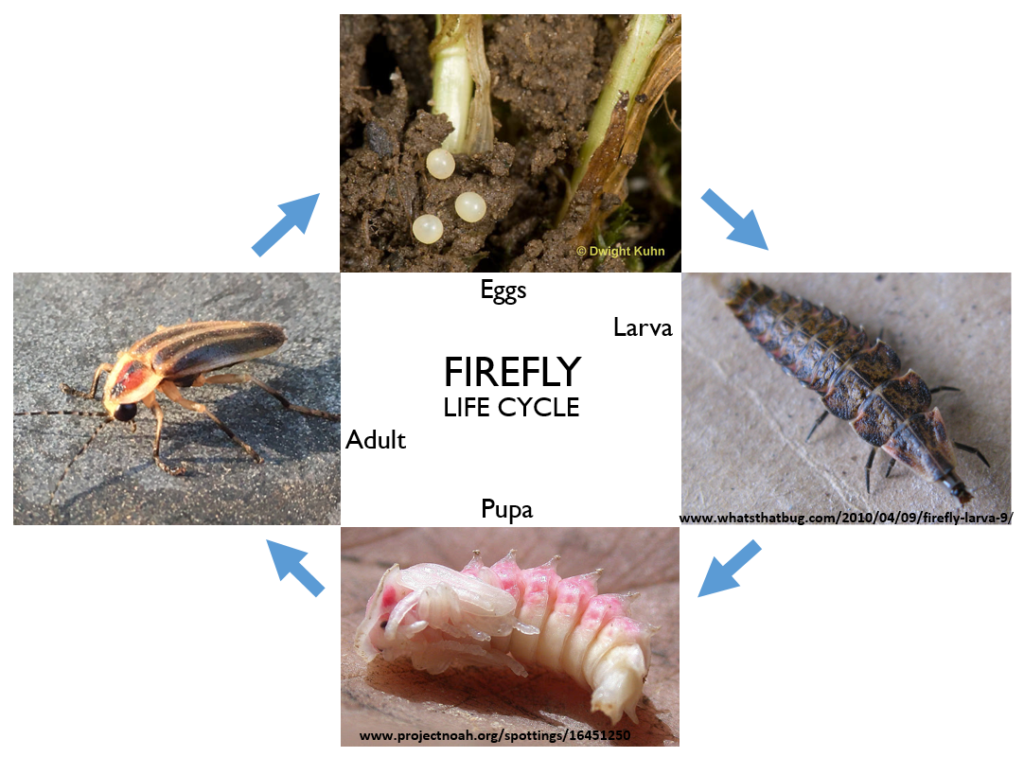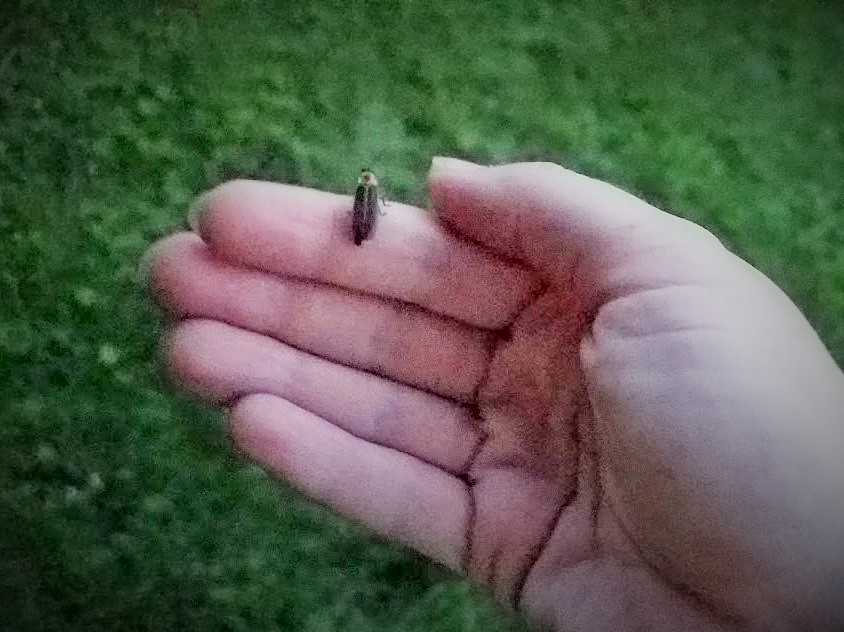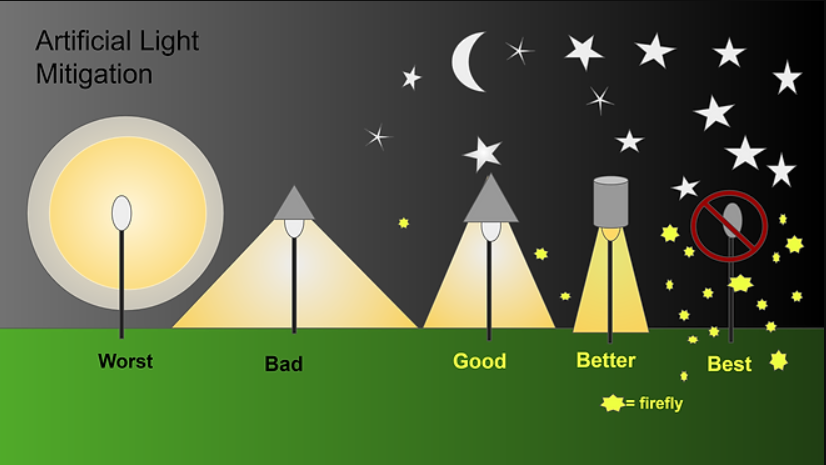When I was little, I always marveled at a quirk of nature that every year the fireflies showed up – almost without fail – on my birthday. Pittsburgh temperatures – and therefore the frost date, bloom dates, and bug emergence dates – are a few weeks behind eastern Pennsylvania in the spring, so such has not been the case since I moved here 13 years ago. If it were just a matter of fireflies emerging later than usual, I would be somewhat OK with that – though I do miss having it as a birthday present. But my change in location isn’t the only factor in the timing or the quantity I see every year. We’re now at a point where there are fewer to see because of a number of man-made factors, and conservation efforts are underway to prevent their further decline.
Biology
Fireflies, or lightning bugs, are neither flies nor bugs, but rather belong to a family of beetles – Lamyridae – which contains many light-emitting insects. They are found across the globe in tropical and temperate climates, and their light-emitting behavior serves the larvae as a warning signal that they will be unpleasant to predators, and some adults as a mating behavior. The light production is a chemical reaction, and the flash pattern varies among species so potential mates can identify each other.[1]
While adults get almost all of the attention, they represent a flash in the pan of the whole life cycle. Adults are around only long enough to mate and lay eggs, about 3-4 weeks. The egg stage only lasts about 3 weeks as well before they hatch into larvae, in which they remain for a whopping 50-102 weeks! After that, sometimes missing a whole mating season, they spend 3 weeks as pupae, and then transform into adults, at which point the cycle repeats.[2]

The larvae themselves are fascinating: while not all adults can produce light, all larvae can; larvae eat “snails, worms, and slugs, which they inject with a numbing chemical to disable,” a fact that shocked me about these seemingly sweet and gentle creatures. It’s the adults that seem – at first – to be more gentle, eating nectar, pollen, or nothing at all… but some eat other fireflies.[4]
Threats
For several years I’ve noticed significantly fewer fireflies in our own yard, and I have heard plenty of anecdotal comments from family, friends, and neighbors on our neighborhood messaging app saying the same. But it’s not just anecdotal evidence – the Xerces Society has assessed 16 North American species of firefly as falling into the categories of Critically Endangered, Endangered, Vulnerable, or Near Threatened.[5] Research studies are taking place all over the world, from England [6] to Malaysia,[7] to better understand what factors are contributing to population decline.
There are a few factors that are thought to be among the leading culprits:
- Climate change, which does not only mean increased temperatures, but also changing weather patterns, all of which can impact features of their traditional habitats;
- Habitat loss, thanks to urban sprawl and increased industrialization in places where they typically live, breed, and travel (Note: this does not only impact fireflies, but represents a broader public health risk for humans too [8]);
- Pesticide and herbicide use, which can harm them directly, but can also harm their food and their habitats (it’s also worth noting that most people wouldn’t recognize fireflies in their pre-adult stages of life, could easily assume they’re an unwanted pest, and try to kill them – I’ve seen it happen with lady beetle larvae, which can be a little scary if you’re not used to identifying them);
- Light pollution, which can interfere with their mating signals and with larval dispersal.

It follows that things you can do to help support firefly populations on your own property involve eliminating pesticide / herbicide use and reducing unnecessary artificial light at night. Things we can do more broadly include working to restore threatened habitats and taking steps to fight climate change.
Conservation
Unfortunately, another factor of habitat destruction can be ecotourism, a form of travel with the purpose to see increasingly rare forms of natural beauty. I have previously written about the irony of getting on a plane (and therefore contributing to climate change) in order to visit beautiful places in the world that are threatened by climate change.[9] Similarly, contributing to a tourism industry (which will increase traffic, hotels, restaurants, lights, and other forms of tourist support) that focuses on access to fireflies, can – through its existence – increase the very factors that threaten them in the first place.[10]
That being said, when done mindfully and cautiously, ecotourism can raise awareness about pertinent issues in a way that is far more moving and meaningful than simply reading about a topic. One event that recently came to my attention while researching this blog post is the Pennsylvania Firefly Festival, which takes place in the Allegheny National Forest the last weekend of June every year. Registration was already closed (they take 50 people per night) by the time I discovered the event, so I’m hoping to be able to attend next year.[11]

There are other things you can get involved in this year in your own backyard. The first is “Lights Out for Lightning Bugs” Week, taking place June 19-25. The same group that organizes the festival I won’t be attending, Pennsylvania Firefly Festival, is encouraging everyone across the state to turn off (or at least shade) porch and outside lights for the week. Supported by research conducted in Allegheny National Forest by Tufts University researcher Avalon Owens, we know that “if fireflies are blinded by lights (especially white and amber lights) or their flashes are overpowered by extensive and prolonged light intrusion, they cannot find a mate and thereby, the next generation is lost.”[13]
Turning off porch and yard lights is a passive way to help. However, for people who want to get even more involved (and this could be a great activity for parents and kids), there is a community science firefly watch taking place this summer run by Mass Audubon (again, teaming up with researchers from Tufts). To participate, you spend 10 minutes once a week observing fireflies in a given location, such as your backyard, and record what you see. For more information and to get started, you can check out Mass Audubon’s Firefly Watch project page here.[14]
I plan to participate in “Lights Out for Lightning Bugs” Week and Mass Audubon’s Firefly Watch… and I hope to do some camping before June is over, where hopefully I’ll see some more. What firefly-related activities are you doing this summer? I’d love to hear about them below.
Thanks for reading!
[1] https://en.wikipedia.org/wiki/Firefly
[2] https://www.firefly.org/facts-about-fireflies.html
[3] https://dyckarboretum.org/fireflies-of-summer/
[4] https://www.nwf.org/Educational-Resources/Wildlife-Guide/Invertebrates/Fireflies
[5] https://xerces.org/blog/iucn-red-list-assess-fireflies
[6] https://resjournals.onlinelibrary.wiley.com/doi/abs/10.1111/icad.12407
[8] https://cnr.ncsu.edu/news/2020/04/habitat-destruction-covid19/
[9] https://radicalmoderate.online/the-real-cost-of-travel/
[10] https://sites.imsa.edu/hadron/2020/03/04/the-extinction-of-fireflies/
[11] https://www.pafireflyevents.org/2021-new-normal
[12] https://www.pafireflyevents.org/lights-out-for-lightning-bugs
[13] https://www.pafireflyevents.org/lights-out-for-lightning-bugs
[14] https://www.massaudubon.org/get-involved/community-science/firefly-watch/getting-started
0 Comments